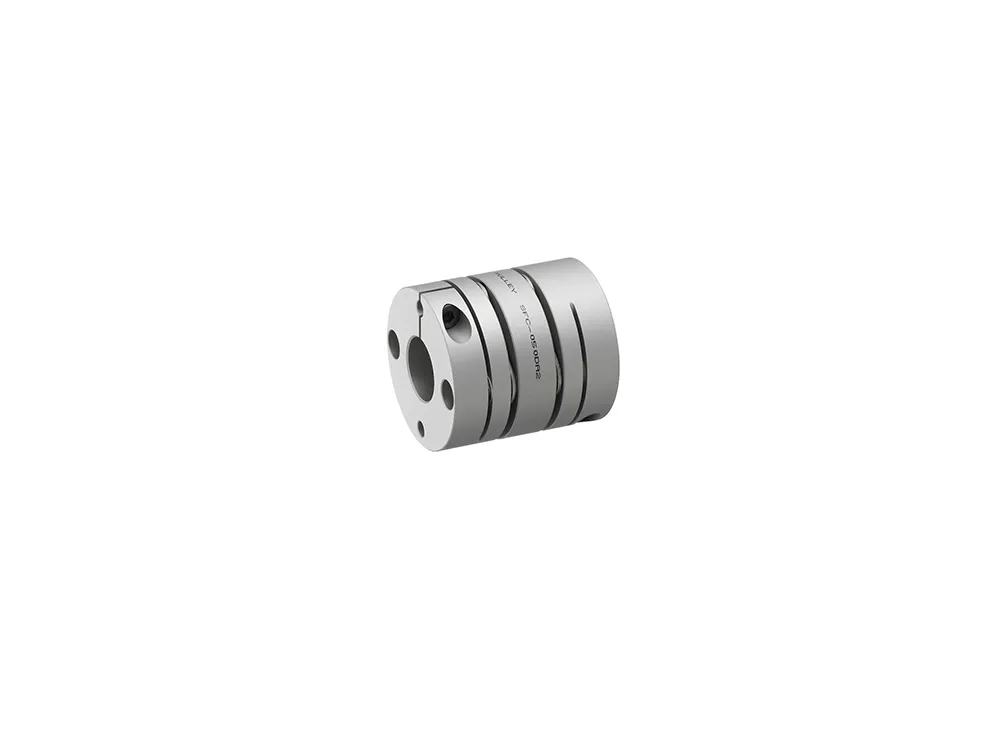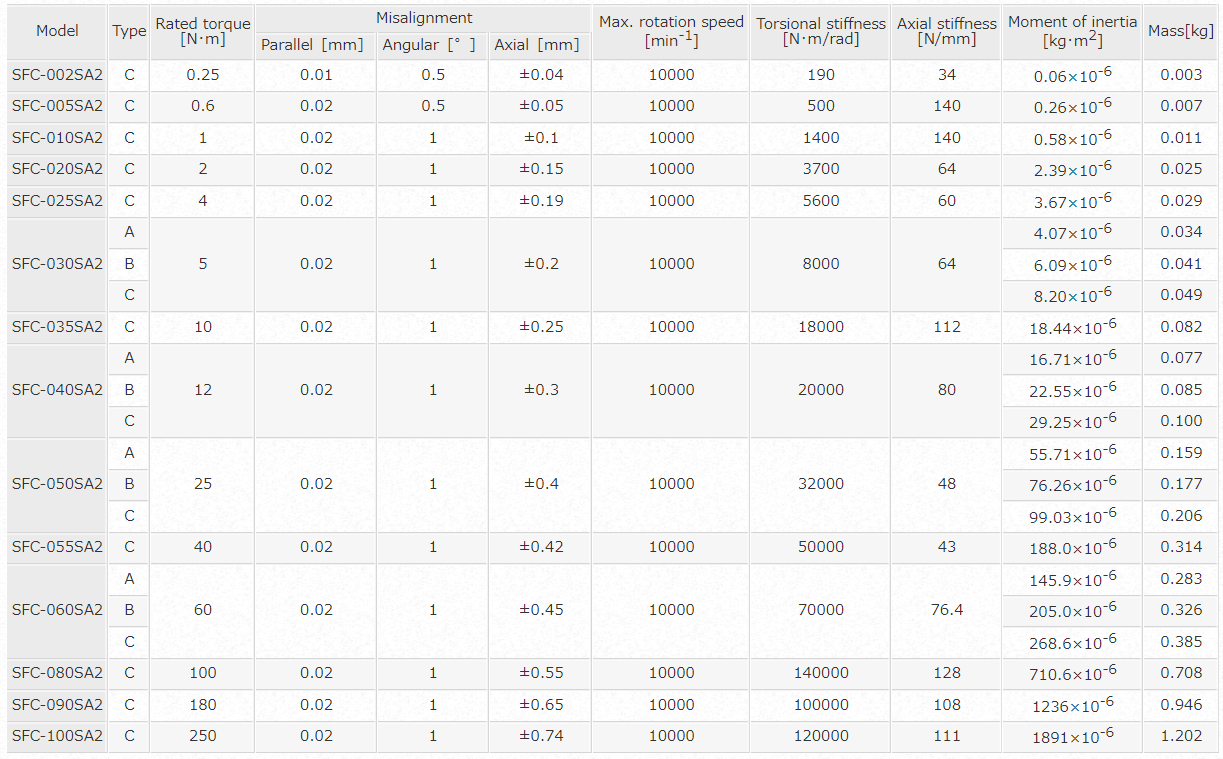
- Solution
- Products
- Brand
- Support
- Sustainability Strategy
- Foreword
- Corporate Governance Operation
- Business Partnership
- Create Shared Value
- Sustainable Environment
- ESG Report
- Stakeholder Questionnaire
- How to Buy
SFC Models
These are disc-spring couplings that use a lightweight, high-strength aluminum alloy for the clamp hub to enable high torsional stiffness and high response. Both single-element types with high torsional stiffness and flexible double-element types that separate double elements with a spacer are available. Both lower the moment of inertia by linking the outer diameter of the hub to the shaft diameter.
Ultra-low inertia
The outer diameter shape of the clamp hub is linked to the bore diameter you are using. This decreases inertia to the lowest amount necessary by reducing the outer diameter when the bore diameter is small, making these optimal for fast-accelerating operation. Three shapes are available to match the combination of bore diameters you are using.
Simple, reliable, no backlash
Since the clamp method is used to couple to the shaft, mounting can be completed by tightening one bolt each on left and right. Clamp hubs enable reliable connections that are strong against vibration and shocks, and all power is transmitted by frictional couplings, so there is no backlash. The clamp hubs on both sides of the coupling are centered using a dedicated tool, ensuring concentricity.
For tapered shafts
Allows coupling via a clamp hub when an optional taper adapter is mounted on the tapered shaft of a servo motor.
Custom-ordered specific lengths (SFC DA2 types)
This type allows you to specify a specific length that matches the distance between shafts that you require.
Clean room compatible
It is a clean room compatible product that has been cleaned, assembled (ISO class 6) and packed in consideration of its use in clean rooms.
Specifications
* Types A / B / C are automatically specified by Miki Pulley according to the combination of bore diameters you select, and cannot be specified by the customer.
* Check the Standard Bore Diameter list as rated torque may be restricted by the holding power of the shaft connection component.
* Max. rotation speed does not take into account dynamic balance.
* Torsional stiffness values given are measured values for the element alone.
* The moment of inertia and mass are measured for the maximum bore diameter.
- Solution
- Products
- Brand
- Support
- Sustainability Strategy
- Foreword
- Corporate Governance Operation
- Business Partnership
- Create Shared Value
- Sustainable Environment
- ESG Report
- Stakeholder Questionnaire
- How to Buy
- About
- Support
- Others
- ACE PILLAR Subsidiary Website

